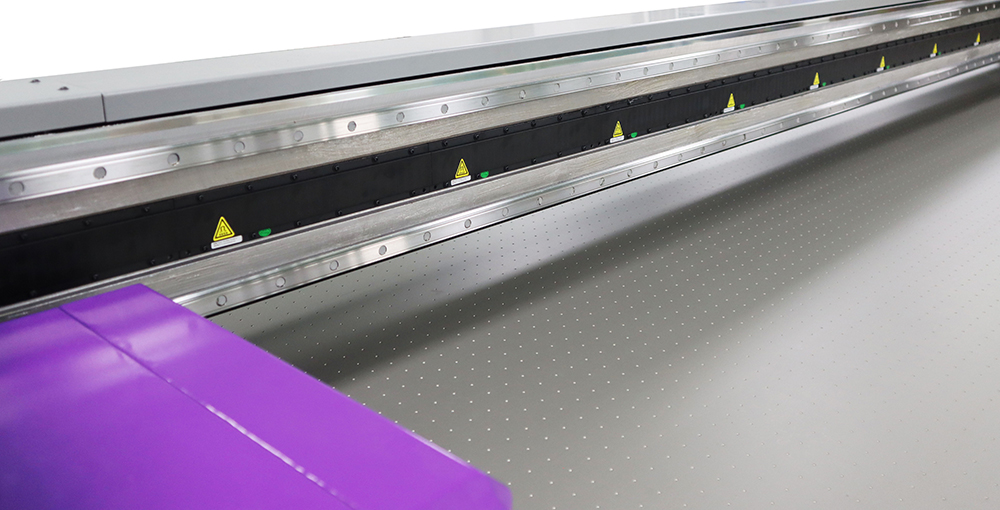UV Flatbed Printer: The Benefits of Modular Design
UV Flatbed Printer: The Benefits of Modular Design
In the realm of digital printing technology, UV flatbed printers have emerged as a game-changer, revolutionizing the way industries approach surface printing. These machines offer unparalleled versatility, precision, and efficiency, enabling businesses to produce high-quality prints on a wide array of materials and substrates. One of the key factors contributing to the success and popularity of UV flatbed printers is their modular design. This article delves into the numerous benefits that a modular design brings to UV flatbed printers, highlighting how it enhances flexibility, ease of maintenance, scalability, and overall productivity.

**1. Introduction to UV Flatbed Printers
UV flatbed printers are advanced digital printing systems that utilize ultraviolet (UV) light to cure or dry ink instantly after it is applied to a substrate. This technology allows for precise control over ink deposition, resulting in vibrant, durable prints that can withstand various environmental conditions. Unlike traditional printing methods, UV flatbed printers can accommodate a broad range of materials, including glass, metal, plastic, wood, and even flexible surfaces like leather and fabric, making them ideal for diverse applications across industries such as advertising, packaging, automotive, and architecture.
**2. The Concept of Modular Design
Modular design is an engineering approach that involves creating a system or product using separate, interchangeable modules or components. Each module serves a specific function and can be independently replaced, upgraded, or customized without affecting the entire system’s integrity. This design philosophy fosters flexibility, ease of maintenance, and scalability, which are crucial for adapting to evolving market demands and technological advancements.
**3. Benefits of Modular Design in UV Flatbed Printers
3.1 Enhanced Flexibility and Adaptability
One of the most significant advantages of a modular UV flatbed printer is its flexibility. With a modular design, printers can be easily configured or reconfigured to suit specific printing requirements. For instance, by swapping out certain modules, a printer can be optimized for printing on rigid materials one day and then adapted for flexible substrates the next, without the need for extensive modifications or downtime. This adaptability allows businesses to quickly respond to market demands and explore new revenue streams by offering a wider range of printing services.
3.2 Simplified Maintenance and Repair
Modular design simplifies maintenance and repair processes, reducing operational costs and downtime. In a traditional non-modular printer, a single fault could potentially require the replacement of the entire unit or an extensive and costly repair process. Conversely, in a modular UV flatbed printer, only the faulty module needs to be identified and replaced, significantly reducing repair time and expenses. Additionally, routine maintenance tasks, such as cleaning or replacing worn parts, are streamlined since access to individual modules is straightforward.
3.3 Scalability and Future-Proofing
Modular design inherently supports scalability, allowing businesses to expand their printing capabilities as needed. As technology advances or market demands shift, specific modules can be upgraded or replaced with more advanced versions, ensuring that the printer remains competitive and relevant. This approach minimizes the risk of obsolete equipment and protects investments by enabling a gradual transition to newer technologies rather than requiring a complete system overhaul.
3.4 Faster Time-to-Market for Innovations
The modular nature of UV flatbed printers facilitates rapid innovation and product development. Manufacturers can introduce new modules or upgrades that enhance print quality, speed, or functionality, and users can quickly adopt these advancements by integrating the new modules into their existing systems. This accelerated time-to-market for innovations ensures that businesses stay ahead of the competition and can offer cutting-edge printing solutions to their clients.
3.5 Cost-Effectiveness
From an economic perspective, modular UV flatbed printers offer long-term cost benefits. While the initial investment might be higher compared to non-modular printers, the ability to upgrade and customize modules as needed eliminates the need for frequent, costly replacements of the entire system. Moreover, the reduced downtime due to simplified maintenance and repairs translates into higher productivity and profitability.
**4. Case Studies and Industry Applications
To illustrate the practical benefits of modular design in UV flatbed printers, consider the following case studies:
- Advertising Industry: A modular UV flatbed printer allowed an advertising agency to quickly adapt its printing services to meet the growing demand for personalized, high-quality prints on various materials, including acrylic and PVC, for indoor and outdoor signage.
- Packaging Sector: A packaging company utilized a modular printer to experiment with new substrates and ink formulations for eco-friendly packaging solutions. The printer’s modular design enabled swift adjustments to the printing process, accelerating product development and time-to-market.
- Automotive Industry: An automotive parts manufacturer leveraged a modular UV flatbed printer to produce durable, high-resolution prints directly on car components, such as dashboards and door panels. The printer’s flexibility accommodated different sizes and shapes of parts, enhancing production efficiency.
**5. Conclusion
In conclusion, the modular design of UV flatbed printers offers a multitude of benefits that significantly enhance their versatility, ease of maintenance, scalability, and overall productivity. By embracing this design philosophy, businesses can stay agile in the face of evolving market demands, leverage technological advancements, and maintain a competitive edge in their respective industries. As UV flatbed printing technology continues to advance, the advantages of modular design will remain a cornerstone in driving innovation and success in the digital printing realm.
